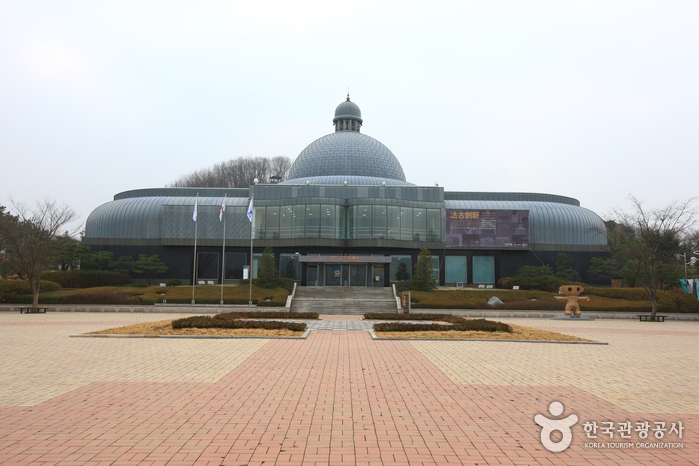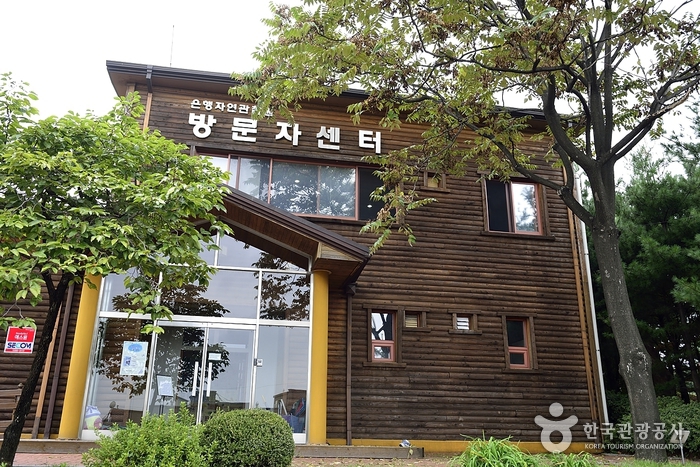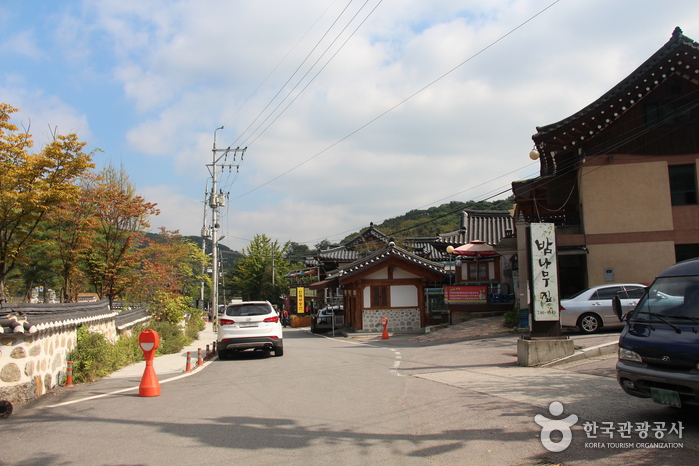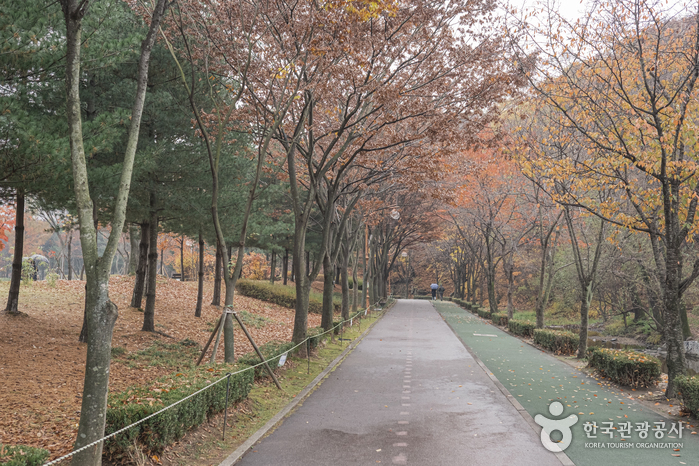Gwangju Royal Ceramic Festival (광주 왕실도자기축제)
8.7Km 9111 2022-10-20
727, Gyeongchung-daero, Gwangju-si, Gyeonggi-do
• 1330 Travel Hotline: +82-2-1330 (Korean, English, Japanese, Chinese) • For more info: +82-31-760-1714
Gwangju Royal Ceramic Festival is held annually in Gwangju, Gyeonggi-do where royal ceramic was first created during Joseon dynasty. The festival first took place in 1998, and offers various programs such as performances, exhibitions, and hands-on activities. With a performance-centered opening ceremony, it is expected to boost the ambience with varied performances, traditional music, dance and living statue.
Gyeonggi Ceramic Museum (경기도자박물관)
8.7Km 18167 2019-03-19
727, Gyeongchung-daero, Gonjiam-eup, Gwangju-si, Gyeonggi-do
+82-31-799-1500
The Gyeonggi Ceramic Museum in Gonjiam special culture zone is the former site where ceramics were produced for the royal households of the Joseon Dynasty for 400 years. The museum specializes in the study of traditional Korean ceramics such as Joseon white porcelain or baekja. It also manages excavation projects, conducts research, and educates the public about the cultural aspects of traditional ceramics.
The museum consists of two large exhibition rooms, a special exhibition room, a multi-purpose room, and other smaller rooms. Its auxiliary facilities include a large-scale outdoor sculpture park; kilns heated with firewood; a Korean-style garden; a tea ceremony performance room; and a shopping mall selling ceramics produced in Gwangju. The museum exhibits traditional ceramics from the Joseon Dynasty such as pure white porcelain, blue and white porcelain, white porcelain painted with under-glaze iron-brown, and punch'ong ware, that were all made throughout the Joseon Dynasty’s 500 years of history. The museum also displays works by modern artists, inheritors of Korea’s honorable ceramic tradition. And to fulfill its educational duties, the museum holds special exhibitions that focus on the culture and history of Korea’s traditional ceramics and offers visitors the opportunity to learn about and appreciate Korea’s traditional ceramics that are still being crafted, even today.
See’S Coffee [Tax Refund Shop] (씨즈커피코리아)
9.2Km 0 2024-04-23
30, 149beon-gil, Padam-ro, Mohyeon-eup, Cheoin-gu, Yongin-si, Gyeonggi-do
-
Janggyeongsa Temple (장경사)
9.2Km 26391 2022-07-22
676, Namhansanseong-ro, Gwangju-si, Gyeonggi-do
+82-31-743-6548
Janggyeongsa Temple is located in Namhansanseong Fortress. Namhansanseong Fortress, which protected Seoul along with Bukhansanseong Fortress, was built at the same time as Janggyeongsa Temple in 1638, during the 16th year of King Injo. Warrior monks from all eight provinces throughout the country helped with the construction. Janggyeongsa Temple is the only remaining temple among nine such temples where military groups made up of monks stayed for trainings.
Eunhaeng Botanical Garden (은행식물원 (은행자연관찰원))
9.6Km 29140 2020-08-19
72, Eunhaeng-ro, Jungwon-gu, Seongnam-si, Gyeonggi-do
+82-31-729-4319
Eunhaeng Botanical Garden is operated by Seongnam-si. The garden was originally a discarded drainage area that was transformed into an ecological park with an arboretum. The garden is rich in greenery, with a diverse range of plants, wildflowers, and insects, making it an ideal place for students to see and learn about nature. The garden is also a beautiful recreation area for local residents.
* Facility area - 34,760㎡ (10,533 pyeong) / Visitor center area 202㎡ (61 pyeong)
* Plants: 89 species 2,317 plants, Shrub: 78 species 13,689 shrubs, Flowering plants: 209 species
94,329 plants
* Insects - Ladybug, butterfly with four feet, Monema flavescens, Riptortus clavatus, black-tipped leafhopper, Poecilocoris lewisi, etc.
Olive Young - Gonjiam Branch [Tax Refund Shop] (올리브영 곤지암)
9.8Km 0 2024-04-18
45, Gonjiam-ro, Gonjiam-eup, Gwangju-si, Gyeonggi-do
-
The North Face - Lotte Goyang Terminal Branch [Tax Refund Shop] (노스페이스 롯데고양터미널)
9.8Km 0 2024-04-22
293, Gwangmyeong-ro, Jungwon-gu, Seongnam-si, Gyeonggi-do
-
Namhansanseong Provincial Park [UNESCO World Heritage] (남한산성도립공원 [유네스코 세계문화유산])
9.9Km 102148 2024-02-29
731 Namhansanseong-ro, Namhansanseong-myeon, Gwangju-si, Gyeonggi-do
+82-31-746-1088
Namhansanseong was a fortress that protected the southern approaches to the capital during the Baekje kingdom (18 B.C. – 660 A.D.) and the Joseon dynasty (1392-1897). During the Qing invasion of Joseon in 1636, King Injo of Joseon (reigned 1623-1649) sought refuge here and constructed Haenggung, a temporary palace. Subsequently, it became the administrative center of the Gwangju region, and today, it is a site where many cultural properties are preserved.
Traditional Food Town around Namhansanseong Fortress (남한산성 전통음식마을)
9.9Km 24432 2021-03-17
731, Namhansanseong-ro, Gwangju-si, Gyeonggi-do
+82-31-762-3010
The Traditional Food Town around Namhansanseong Fortress has many restaurants offering rice, dotorimuk (acorn jelly salad), tojongdak (whole chicken) dishes, and other traditional dishes. The area embraces almost 300 years of Korean history and the restaurants were built in traditional hanok-style buildings around Namhansanseong Fortress, a military stronghold from the Joseon dynasty.
Yuldong Park (율동공원)
10.2Km 53406 2021-11-30
145, Munjeong-ro, Bundang-gu, Seongnam-si, Gyeonggi-do
+82-31-702-8713
Yuldong Park is a large urban neighborhood park located in the Bundang area of Seongnam. Since its opening in 1999, the park has become a favorite weekend hangout, frequented by residents of Seongnam and Seoul. This well-equipped park has a 45-meter bungee jumping site, a large fountain and a 33-acre reservoir encircled by a 2.5 kilometer promenade/bike path. Other facilities include a 13 meter-high artificial rock climbing wall, badminton center, children’s playground, foot acupressure path, grass plaza, year-round flower garden, field of reeds and theater. The park is also a popular date course for couples at nighttime as there are many quiet cafes located near the reservoir.


![See’S Coffee [Tax Refund Shop] (씨즈커피코리아)](http://tong.visitkorea.or.kr/cms/resource/91/2875491_image2_1.jpg)

![Olive Young - Gonjiam Branch [Tax Refund Shop] (올리브영 곤지암)](http://tong.visitkorea.or.kr/cms/resource/72/2881472_image2_1.jpg)
![The North Face - Lotte Goyang Terminal Branch [Tax Refund Shop] (노스페이스 롯데고양터미널)](http://tong.visitkorea.or.kr/cms/resource/52/2888352_image2_1.jpg)
![Namhansanseong Provincial Park [UNESCO World Heritage] (남한산성도립공원 [유네스코 세계문화유산])](http://tong.visitkorea.or.kr/cms/resource/56/2612856_image2_1.jpg)


 English
English
 한국어
한국어 日本語
日本語 中文(简体)
中文(简体) Deutsch
Deutsch Français
Français Español
Español Русский
Русский